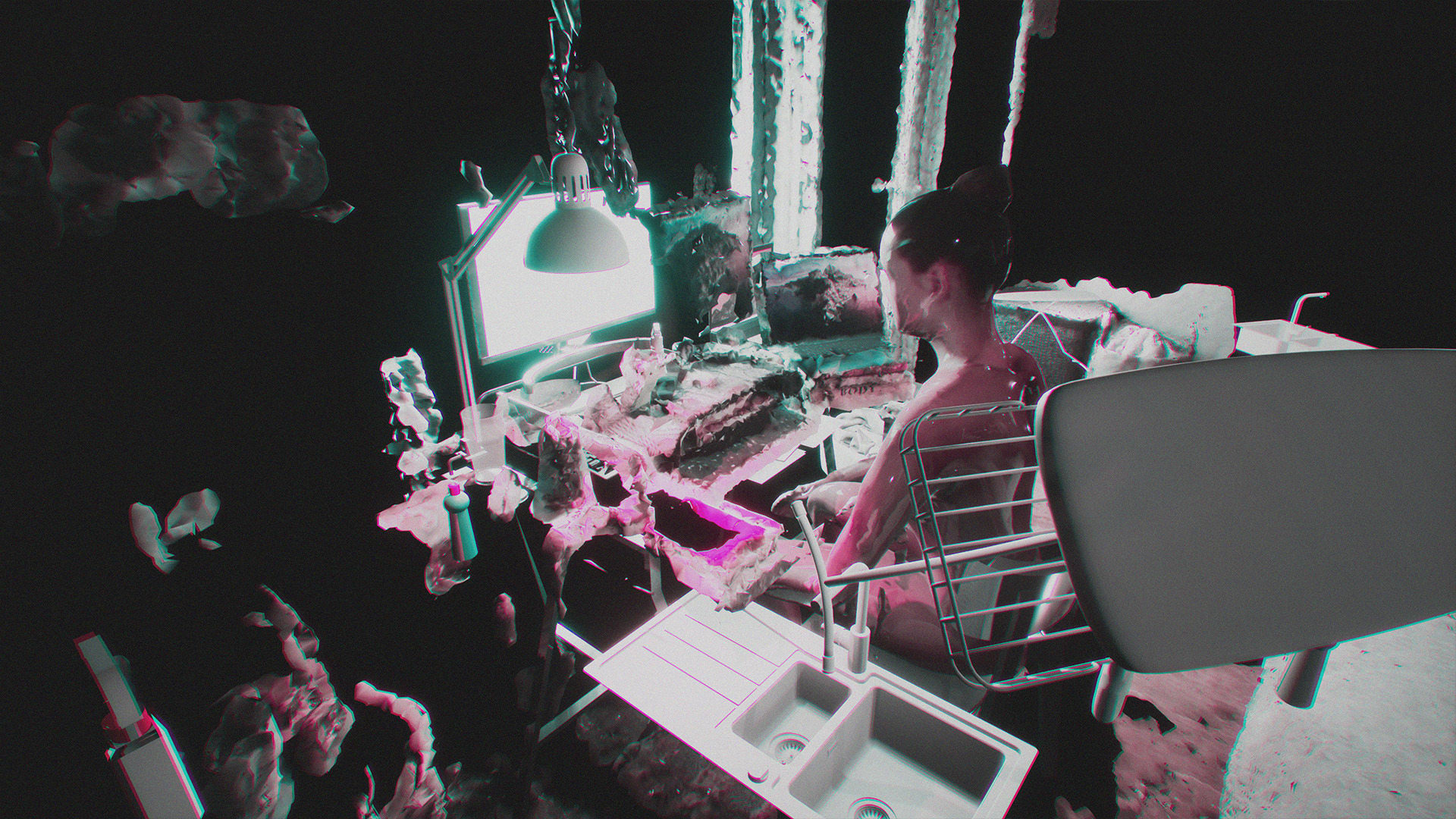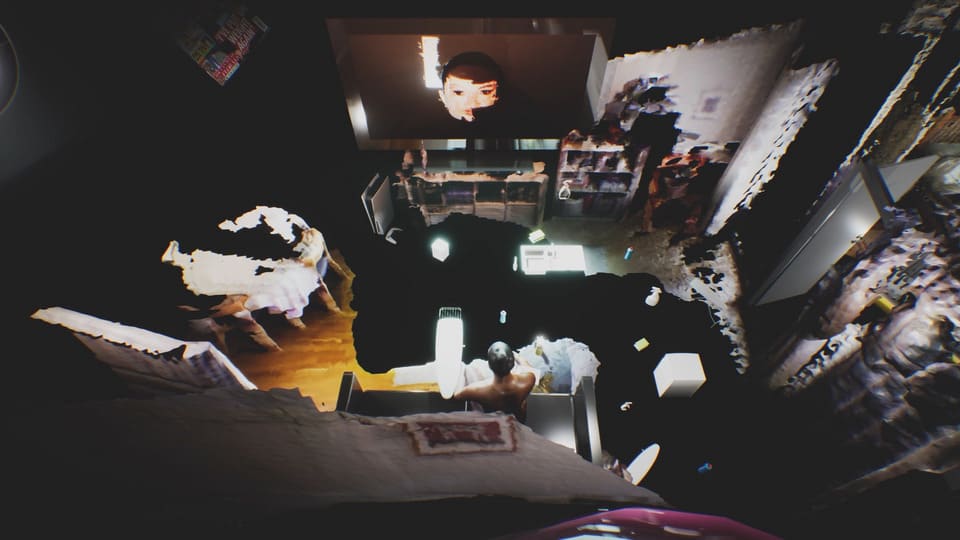Raluca’s practice regards design as a catalyst for social cohesion, which can serve as a drive for new communal infrastructures. Her work is centred on visual arts and narrative, with an interest in film, exhibition design, interactive installations and digital technologies, addressing a concern for digitisation of physical processes. Raluca’s current work explores a denial of adhering to pre-established rules for corporeal representation, and further spatial implications that such representations have.
Originally from Romania, Raluca has completed her undergraduate studies in Architecture at Oxford Brookes University, followed by a professional background which includes educational, cultural and community projects. During her time in practice, Raluca has also been involved in multiple educational volunteering projects, including OpenCity, RIBA Architecture Ambassadors and RIBA Mentoring scheme.


![Film Still [00:57]](https://res.cloudinary.com/rca2020/image/upload/f_auto,h_1080,w_1920,c_fill,g_auto,q_auto/v1/rca2021/60c6292d101fec8c9f4dbb3d-153521?_a=AXAH4S10)
![Film Still [01:15]](https://res.cloudinary.com/rca2020/image/upload/f_auto,h_1080,w_1920,c_fill,g_auto,q_auto/v1/rca2021/60c6292d101fec8c9f4dbb3d-762412?_a=AXAH4S10)
![Film Still [04:55]](https://res.cloudinary.com/rca2020/image/upload/f_auto,h_1080,w_1920,c_fill,g_auto,q_auto/v1/rca2021/60c6292d101fec8c9f4dbb3d-788821?_a=AXAH4S10)
![Film Still [04:02]](https://res.cloudinary.com/rca2020/image/upload/f_auto,h_1080,w_1920,c_fill,g_auto,q_auto/v1/rca2021/60c6292d101fec8c9f4dbb3d-796976?_a=AXAH4S10)
![Film Still [05:07]](https://res.cloudinary.com/rca2020/image/upload/f_auto,h_1080,w_1920,c_fill,g_auto,q_auto/v1/rca2021/60c6292d101fec8c9f4dbb3d-197129?_a=AXAH4S10)
![Film Still [05:29]](https://res.cloudinary.com/rca2020/image/upload/f_auto,h_1080,w_1920,c_fill,g_auto,q_auto/v1/rca2021/60c6292d101fec8c9f4dbb3d-208033?_a=AXAH4S10)
![Film Still [01:15]](https://res.cloudinary.com/rca2020/image/upload/f_auto,h_1080,w_1920,c_fill,g_auto,q_auto/v1/rca2021/60ccc1e598de755bbfda649f-513474?_a=AXAH4S10)
![Film Still [06:55]](https://res.cloudinary.com/rca2020/image/upload/f_auto,h_1080,w_1920,c_fill,g_auto,q_auto/v1/rca2021/60ccc1e598de755bbfda649f-541497?_a=AXAH4S10)
![Film Still [07:35]](https://res.cloudinary.com/rca2020/image/upload/f_auto,h_1080,w_1920,c_fill,g_auto,q_auto/v1/rca2021/60ccc1e598de755bbfda649f-670633?_a=AXAH4S10)
![Film Still [08:30]](https://res.cloudinary.com/rca2020/image/upload/f_auto,h_1080,w_1920,c_fill,g_auto,q_auto/v1/rca2021/60c6382b101fec8c9f613ded-184636?_a=AXAH4S10)
![Film Still [08:05]](https://res.cloudinary.com/rca2020/image/upload/f_auto,h_1080,w_1920,c_fill,g_auto,q_auto/v1/rca2021/60c6382b101fec8c9f613ded-916806?_a=AXAH4S10)
![Film Still [07:50]](https://res.cloudinary.com/rca2020/image/upload/f_auto,h_1080,w_1920,c_fill,g_auto,q_auto/v1/rca2021/60c6382b101fec8c9f613ded-205377?_a=AXAH4S10)
![Film Still [08:52]](https://res.cloudinary.com/rca2020/image/upload/f_auto,h_1080,w_1920,c_fill,g_auto,q_auto/v1/rca2021/60c6382b101fec8c9f613ded-192294?_a=AXAH4S10)